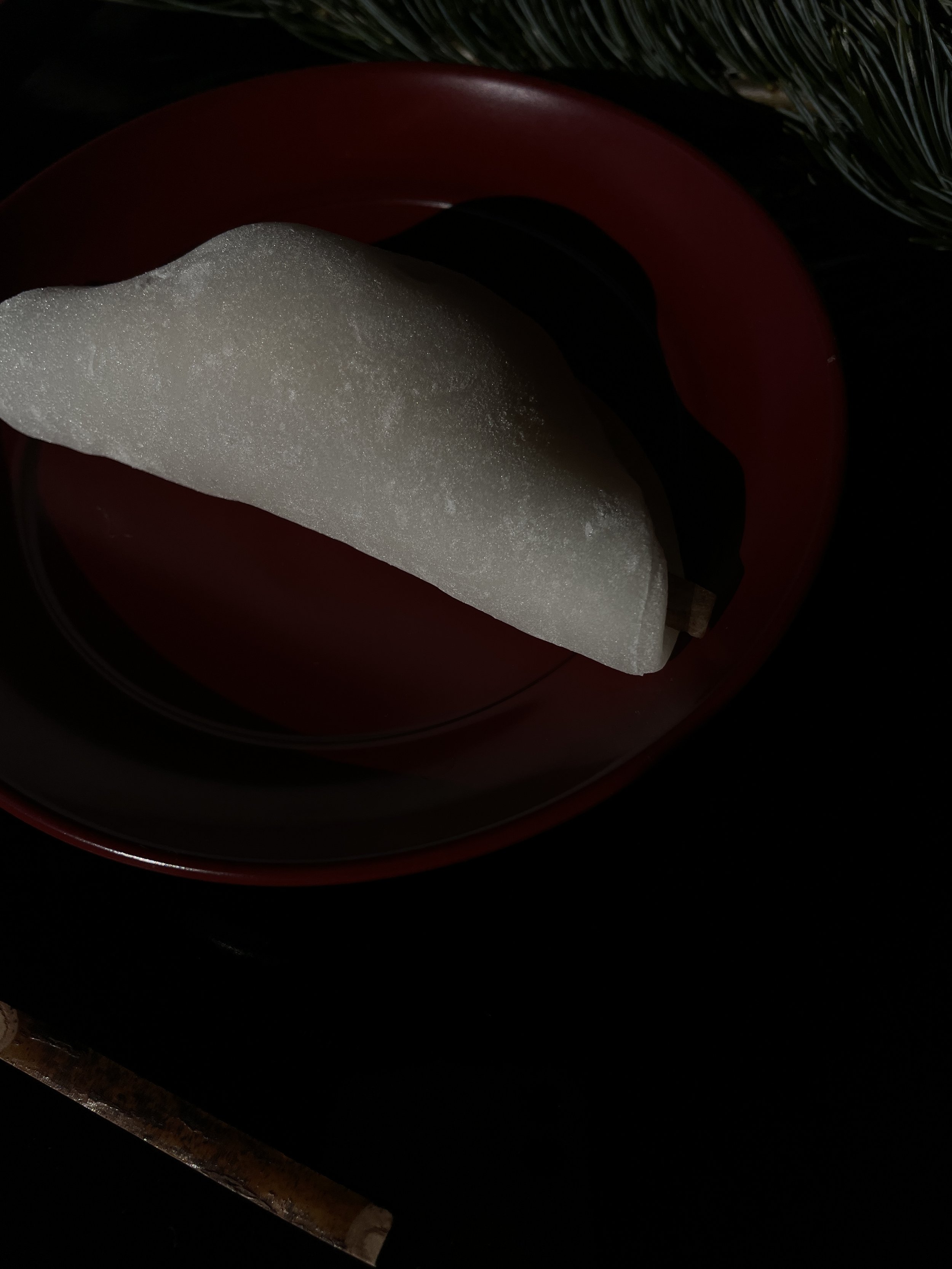Microseason: Japanese Parsley Sprout
WINTER
FIRST CHILL
JAPANESE PARSLEY SPROUT
5 - 9 January
Happy new year! We have entered the coldest month and arguably one of the most important periods. Kanjikomi, or literally “cold preparation”, refers to the prep work of our fermented foods during these very cold days each year. And these foods ensure that we have a nutrient-dense and plentiful table.
Nihonshu saké, soy sauce, takuan, and miso, are some of the most common food things that are prepared kanjikomi across Japan.
The reason behind kanjikomi is that we are able to leverage two parts: Autumn harvest and Winter weather.
In the case of miso, for example, a very simple combination of three ingredients, koji-inoculated rice, barley, or soy beans, braised soy beans, and salt are blended together. At first the ingredients must mingle. Slowly courting one another. Not too aggressive. Respectfully. Just when the ingredients are comfortable, we enter Spring and the temperatures begin to rise bit by bit. We are able to take advantage of the expansive yang energy of the warmer months to allow fermentation to blossom. Slowly but surely Spring turns to Summer, and the fermentation process speeds up. But by this time, the ingredients have now become one that they are able to take on most environmental curve balls. I often think of this phenomena like a dance company or musical band. They are no longer just individual players but a collective, able to improvise because of the trust that has been developed over time.
Photo credit: Momoko Nakamura

